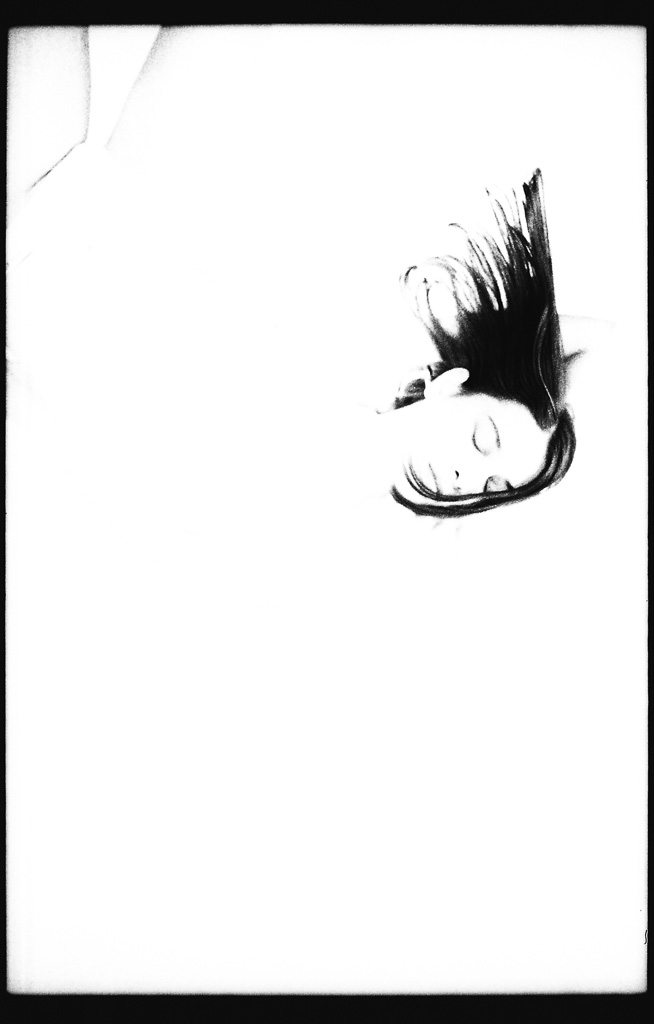Personal development is tough. It’s a struggle and also a challenge. It’s hard to push yourself to achieve new goals and to constantly find ways to better yourself. Nonetheless, there wouldn’t be any growth without challenge. That’s what life is all about.
Yolanda Y. Liou is up for the challenge, it seems. Over the past few years, the Taiwanese artist has built a career as a commercial photographer, her work appearing in publications from GQ to Grazia. She has collected some awards along the way too, including Editors Pick at the 2018 Lens Culture B&W Awards and Honourable Mention in the 2019 Creative Review Photography Annual.
However, her ongoing series The Self-Developed Project is where we can see Liou’s true artistic expression. “I’m interested in inviting imperfection and unpredictability into the image-making process, allowing the materiality of the film to coexist with the photographic image,” is how she summarises the project.
The 2019 award from Creative Review is for her series Thank You for Playing with Me, a project she did with Plus-size model Enam Asiama and Vanessa Russell that was first shown at Neo Hua Ren exhibition in August 2019. Where does this personal project fit in with her most recent fine art portraiture? “I normally try more random things while shooting for self-developing,” explains Liou, which goes a long way to helping understand The Self-Developed Project.
Liou uses a Pentax 35mm film camera for these photographs and self-processes the black and white analogue film herself, in her bathroom of all places. She also deliberately soaks the film rolls in various fluids causing the film material to degrade, which allows part of the captured image to endure and bleed through the decay. “It’s all part of the experiment,” she says, “and it’s a good way of discovering new perspectives and learning controlled accidents on my personal approach of making photography.”
The series encompasses fashion shoot style shots, for example, but with a model’s face covered by her hair. There are also shots where a model’s face is overexposed; the series takes in a range of varied notions, all within the theme of portraiture.
There are double exposures and almost completely white negatives with only a glimpse of a model’s features, flowing hair the focal point of the image. Another similar photo exposes just the body of a model, her pose clear in only her underwear but her head white from overexposure.
Some of the images have an airy quality caused by the fluids that have degraded the film, resulting in a halo effect hovering over a model. It all adds to the sense of experimentation in the series, creating something completely different from Liou’s regular commercial shoots.
“I’m interested in inviting imperfection and unpredictability into the image-making process, allowing the materiality of the film to coexist with the photographic image” Quote
Her use of shadow throughout the whole series is exquisite, complementing the black-and-white range against the experimentalism of the photos as a whole. The use of overexposure is also another really important part of the series, especially in some of the images where the film has significantly degraded.
Liou’s use of a variety of models adds to the depth and richness of the series. Being a commercial photographer, it would be easy to just use an image of ‘standard’ beauty but Liou uses models that add relevance; all races, ethnicities and genders are represented, which makes the photos feel contemporary and the avant-garde nature of the method gives the whole series impact.
Some of the photos have the quality of a wet plate collodion process; where the film has degraded it leaves the appearance of an archaic form, but it also alters the reference of the models to make it look as if they too are in the nineteenth century.
There is one photo that doesn’t feature any models. It resembles something from twentieth-century Cambodia a few years after Year Zero of Pol Pot’s heinous regime. The image of skulls alone isn’t so striking, rather it’s the degraded film and old-fashioned quality of the final image that reveals Liou’s skills to be more than just capturing a person in a beautiful composition. This particular photo represents how Liou has used this series to show what she can do as an artist and not just as a photographer.


















